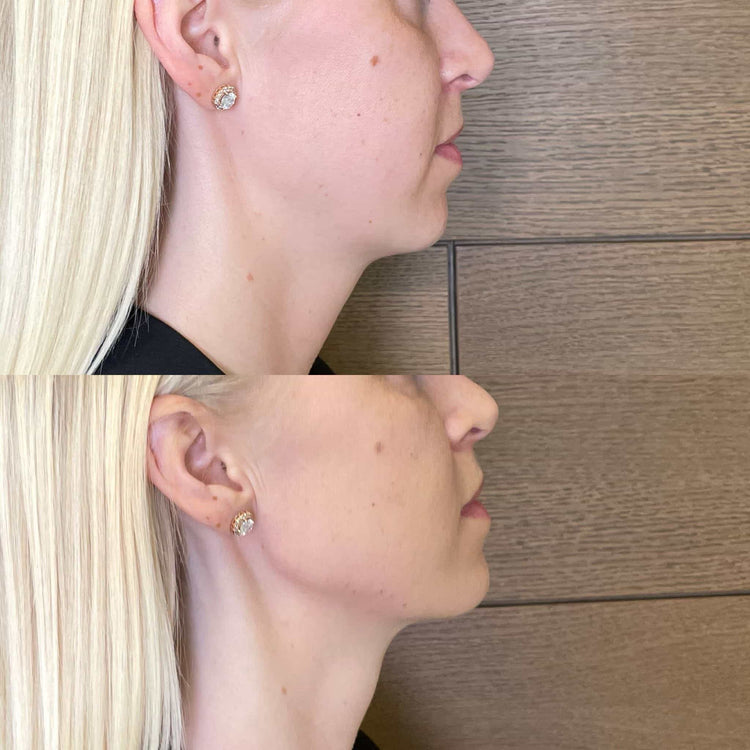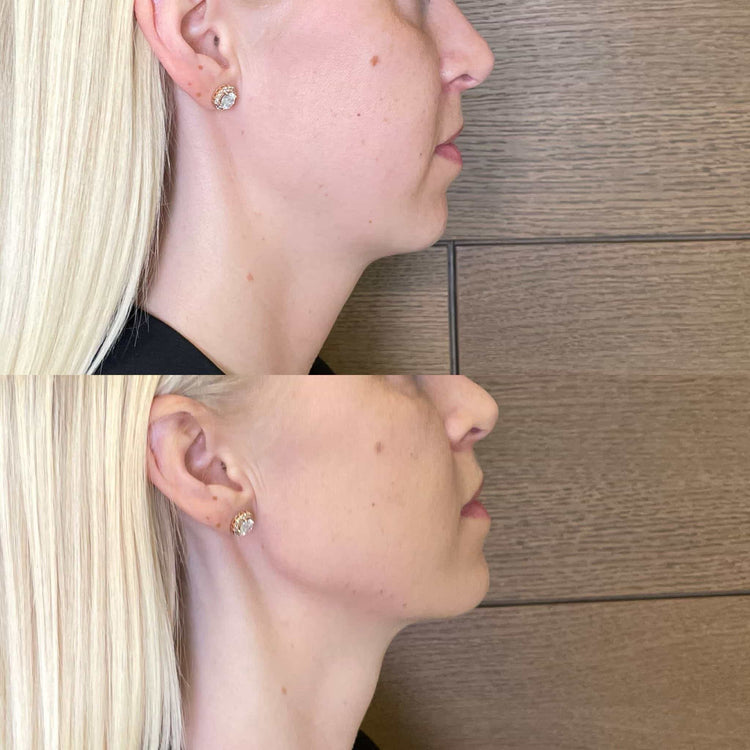Can Jaw Fillers Help With Facial Asymmetry
Facial asymmetry can affect an individual’s appearance and self-confidence. While genetics play a role, structural imbalances due to jaw size or shape discrepancies can contribute to this issue. Dermal fillers offer a non-surgical option for addressing these concerns, potentially restoring balance and symmetry to the face.
Understanding Facial Asymmetry
Dermal fillers are injectable substances used to add volume and reshape facial features. They contain hyaluronic acid, a natural substance found in the body that attracts and holds moisture. When injected into specific areas of the jawline, fillers can subtly augment its size or contour, effectively counteracting unevenness. For example, injecting filler on one side of the jaw can help balance it with the other side if there’s a noticeable difference in projection.
It’s important to note that jaw fillers are not a cure for all types of facial asymmetry. Some imbalances may stem from underlying skeletal differences that require more complex treatments like orthognathic surgery. A consultation with a board-certified plastic surgeon or dermatologist experienced in filler injections is essential to determine if jaw fillers are an appropriate solution for your individual case.
Causes of Facial Asymmetry
Facial asymmetry can be caused by various factors, both genetic and structural. Genetics play a role in determining the initial shape and size of facial features. Some individuals may be naturally predisposed to slight asymmetries due to variations in bone development or muscle structure.
Structural imbalances can also contribute to facial asymmetry. Discrepancies in jaw size or shape, often caused by differences in muscle development or growth patterns, can create an uneven appearance. Additionally, trauma or injury to the face can lead to asymmetry.
How Jaw Fillers Work
Dermal fillers are injectable substances used to add volume and reshape facial features. They contain hyaluronic acid, a natural substance found in the body that attracts and holds moisture.
When injected into specific areas of the jawline, fillers can subtly augment its size or contour, effectively counteracting unevenness. For example, injecting filler on one side of the jaw can help balance it with the other side if there’s a noticeable difference in projection.
Benefits of Jaw Fillers for Facial Asymmetry
Dermal fillers offer a non-surgical option for addressing facial asymmetry caused by structural imbalances in the jawline.
By injecting hyaluronic acid filler into specific areas of the jaw, practitioners can subtly augment its size or contour, counteracting unevenness and restoring balance to the face.
Risks and Side Effects of Jaw Fillers
Facial asymmetry can be a source of concern for many individuals. While some degree of facial asymmetry is normal, significant discrepancies in jaw size or shape can impact appearance and self-confidence. Dermal fillers have emerged as a non-surgical option for addressing these concerns.
Dermal fillers contain hyaluronic acid, a naturally occurring substance in the body that attracts and holds moisture. When injected into the jawline, they can subtly augment its size or contour, potentially balancing the face. For instance, injecting filler on one side of the jaw can help even out an asymmetry caused by a smaller projection on one side compared to the other.

It is crucial to understand that jaw fillers are not a solution for all types of facial asymmetry. Some imbalances may stem from underlying skeletal differences that require more complex treatments like orthognathic surgery.
Before considering jaw fillers, it is essential to consult with a qualified plastic surgeon or dermatologist experienced in filler injections. They can assess your individual case, determine if fillers are an appropriate treatment option, and discuss potential risks and benefits.
Like any medical procedure, jaw fillers carry potential risks and side effects. These may include bruising, swelling, tenderness, infection, and allergic reactions. It’s important to follow the provider’s post-procedure instructions carefully to minimize these risks.
Alternatives to Jaw Fillers
Jaw fillers can be a viable option for addressing facial asymmetry caused by structural imbalances in the jawline. They work by adding volume and subtly reshaping the jaw, helping to even out discrepancies in size or projection on either side of the face.
Alternatives to jaw fillers include other dermal fillers targeting specific areas, such as cheek augmentation to create a more balanced profile. Other options include Kybella injections, which can help reduce excess fat under the chin, potentially improving symmetry.
In some cases, more invasive procedures like orthognathic surgery may be necessary to correct severe skeletal discrepancies.
Choosing a Qualified Provider
When considering jaw fillers for facial asymmetry, choosing a qualified provider is paramount. Look for board-certified plastic surgeons or dermatologists with extensive experience in dermal filler injections.
Inquire about their training, experience with jaw filler procedures, and patient outcomes. Review before-and-after photos to assess their aesthetic sense and ability to achieve natural-looking results.
During the consultation, discuss your goals, expectations, and any concerns you may have. A qualified provider will thoroughly evaluate your facial structure, listen attentively to your desires, and provide realistic recommendations tailored to your individual needs.
Post-Treatment Care

Post-treatment care is crucial for optimal results and minimizing potential complications after jaw filler injections.
Follow your provider’s instructions carefully regarding post-procedure activities, such as avoiding strenuous exercise or activities that could increase pressure on the treated area.
You may experience some temporary side effects like bruising, swelling, tenderness, or redness around the injection sites. Apply ice packs to the area as directed to reduce inflammation and discomfort.
Avoid touching or rubbing the treated area excessively to prevent infection and ensure proper healing.
Keep the injection sites clean and dry, following your provider’s recommendations for wound care if necessary.
It is important to attend any scheduled follow-up appointments to monitor your progress and address any concerns.

Results and Longevity
Results from jaw fillers can be noticeable immediately after treatment. However, it may take a few days to a week for the final results to fully appear as swelling subsides.
- The longevity of jaw fillers varies depending on individual factors such as metabolism and lifestyle.
- On average, jaw fillers can last anywhere from six months to two years.
To prolong the results of jaw filler injections, it is important to follow post-treatment care instructions carefully and maintain a healthy lifestyle.
- Protect your skin from excessive sun exposure by wearing sunscreen daily, as UV rays can break down hyaluronic acid.
- Hydrate adequately by drinking plenty of water to help maintain the volume and longevity of the filler.
- Avoid smoking or excessive alcohol consumption, as these habits can accelerate the breakdown of hyaluronic acid.
- New Patient Treatment Near Reigate, Surrey - May 9, 2025
- Botox For Dimpled Chin In South Kensington, London - May 9, 2025
- Can You Buy THC Soda Online? What To Watch Out For - May 9, 2025
